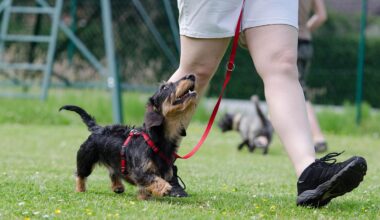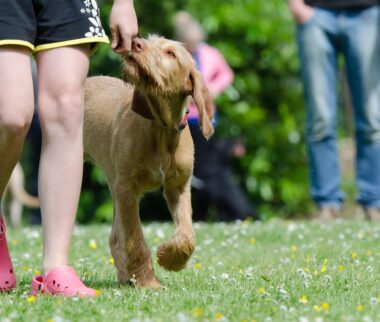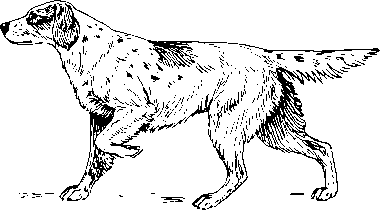The Science Behind Scent Detection in Dogs
Scent detection in dogs is largely attributed to their extraordinary olfactory capabilities. Dogs possess up to 300 million olfactory receptors in their noses, making their sense of smell exponentially sharper compared to humans, who have around 5 million. The part of a dog’s brain responsible for analyzing smells is much larger than that in humans. One of the significant factors contributing to dogs’ scent detection proficiency is their ability to differentiate odors. They can detect specific scents even in highly complex environments filled with competing smells. Scent training enhances these abilities further by teaching dogs to focus on particular scents. Dogs are trained using positive reinforcement to ensure that they remain motivated and engaged during the training process. The effectiveness of scent detection has led to extensive application in various fields, including search and rescue, drug detection, and even medical diagnosis. Moreover, scent detection requires systematic training protocols where dogs learn not just the task but also safety protocols while working. These rigorous training sessions ensure dogs can perform reliably even in strenuous conditions, showcasing the impressive science that underpins their innate abilities.
The Biological Basis of Scent Detection
The biology behind a dog’s sense of smell is a fascinating subject that reveals why these animals excel at scent detection. Dogs have a specialized anatomy that supports their olfactory prowess. They possess a long and moist nose that captures scent particles more efficiently. The air is drawn into the nasal cavity, where it is filtered through complex structures known as turbinates, which are lined with olfactory receptors. These receptors trigger neural signals that travel straight to the olfactory bulb in the brain. The brain processes these signals, allowing the dog to identify and differentiate between various scents. Additionally, dogs utilize a vomeronasal organ that enables them to detect pheromones, which are chemicals released by animals that can convey different information about other animals or environments. Training methods often mimic natural behaviors, encouraging dogs to search and locate specific scents with enthusiasm. The combination of biological advantages along with appropriate training can enhance the support provided by skilled handlers. Understanding the biological innate abilities of dogs opens avenues for more effective training techniques to maximize their scent detection training capabilities.
One of the key training methods used in scent detection is known as the scent work technique. This approach primarily focuses on familiarizing dogs with a target scent, gradually increasing the complexity of the tasks involved. Introduced initially with foundational scents, this approach creates a structured learning environment. For instance, scents such as birch, anise, or clove are often used to start training.Handlers reward dogs for correctly identifying these scents through positive reinforcement, ensuring they enjoy the learning process. As training progresses, distractions are introduced to mimic real-world conditions that dogs may face in their working environments. This step is crucial as it teaches dogs to maintain focus and commitment despite competing smells. Consistent practice reinforces the dog’s understanding and recognition of their target scents while improving their persistence and determination. Training sessions are conducted in various environments, both indoors and outdoors, providing dogs a comprehensive learning experience. Using scent detection equipment such as scent cones can help refine their ability to pinpoint specific odors. The success of these techniques underscores the importance of structured training in developing a dog’s innate scent detection capabilities.
Impacting the effectiveness of scent detection training is the dog’s motivation, which is critically essential. It plays a significant role in how well dogs learn and apply scent detection skills. Motivation can stem from various sources, such as food rewards, play, and praise from their handlers. Identifying what motivates a specific dog allows trainers to create a personalized training plan that caters to that dog’s preferences. Understanding and adapting to individual dogs‘ personalities can lead to higher success rates during training sessions. For example, if a particular dog responds better with tug toys, incorporating them into training can result in more enthusiastic participation. Properly timed rewards reinforce desired behavior, making the training process more effective. Behavioral psychology principles, namely operant conditioning, are widely incorporated during training. Trainers also ensure that the training remains enjoyable, preventing the dog from becoming disinterested. As motivation is intrinsically linked to retention and performance, fostering a strong bond of trust between the dog and handler becomes paramount. Establishing a positive and inviting atmosphere contributes to proactive responses while easing the learning curve for dogs involved in scent detection activities.
Challenges in Scent Detection Training
Despite the numerous advantages dogs possess for scent detection training, challenges persist. One of the main issues trainers encounter is ensuring consistency throughout all training sessions. Variability in scents caused by environmental changes can influence a dog’s response to cues. Seasonal changes, exposure to different weather, and varying terrains can alter the scents presented to the dogs and often cause distractions. To combat this, trainers often implement gradual exposure to varied conditions, transitioning the dog slowly through different environments. This strategy allows dogs to become accustomed to new scents, helping avoid confusion later on during actual scent detection tasks. Furthermore, handlers must cultivate patience, as not all dogs progress uniformly through training. Each dog learns at its own pace, whereby some may require longer periods to master certain tasks. Also, over-excitement during training can lead to mistakes; therefore, maintaining calmness is crucial. Recognizing and addressing these challenges with appropriate strategies ensures that trainers develop resilient dogs capable of excelling. The responsibility falls on trainers to create a seamless transition between training and real-life applications, ensuring dogs are fully prepared to handle scent detection tasks in various scenarios.
Scent detection training is relevant in multiple professions, showcasing the versatility and adaptability of trained dogs. Law enforcement engages dogs trained in narcotics detection, significantly improving efficiency in uncovering illegal substances. Similarly, dogs trained for search and rescue operations play a crucial role in locating missing persons. In medical fields, specially trained dogs have assisted in detecting certain illnesses earlier than traditional methods, offering groundbreaking possibilities for early diagnosis. Each application demands specific training regimens catering to the utmost precision. The addition of scent detection dogs to a team leads to higher success rates in their assigned tasks. For example, during a search operation, the accuracy and efficiency of trained scent detection dogs significantly outperform human efforts alone. These real-world applications highlight the impactful bond between dogs and humans in various occupational roles. Additionally, there is growing interest in utilizing dogs trained for tracking wildlife, adding ecological benefits to their professional capabilities. As such, the potential of scent detection dogs is not only groundbreaking but also showcases the unique abilities dogs offer to modern society. Their heartfelt commitment and reliable performance make them invaluable assets across numerous fields.
Advances in technology are revolutionizing scent detection training, creating opportunities to enhance existing methodologies. For instance, innovative devices can help dog handlers simulate scent trails, improving training efficiency. This use of technology allows handlers to assess and analyze various behavioral responses in real-time. Practical applications include electronic scent dissemination tools that can deploy specific scents within a controlled environment. Such developments not only streamline the training process but also make it more engaging. Moreover, researchers are investigating the incorporation of biometric sensors to monitor a dog’s physiological responses during scent detection tasks, aiding in understanding motivation and stress levels. Collaboration between trainers and tech developers will continue to push the envelope of scent detection capabilities, allowing trainers to devise tailored training approaches effectively. With the progressive fusion of technology and canine training, optimal methods will evolve that sharpen dogs’ natural skills and empower handlers. Furthermore, as data collection advances, the future of scent detection training looks promising, paving the way for improved protocols, training strategies, and overall comprehension of canine scent detection capabilities.
As we advance into new areas of training, commitment to continuous education and adaptation in scent detection is crucial. Professional trainers must remain vigilant in keeping abreast of current trends, discoveries, and technologies shaping scent detection methodologies. Fostering a culture of knowledge sharing among trainers also proves beneficial, as collective experiences lead to improved training techniques. Networking with veterinary professionals and canine behaviorists further enhances the knowledge pool available to trainers. Engaging in workshops and seminars focused on scent detection can provide new insights into effective training strategies. Building these connections creates a robust foundation for continuous growth and development within the canine training community. Additionally, certifications and ongoing assessments can encourage trainers to refine their skills and practices continually. This commitment to education enables trainers to incorporate the latest research findings and innovative approaches into their programs. Emphasizing the importance of lifelong learning will keep scent detection training evolving, ensuring that dogs and handlers are well-equipped for their tasks. Not only does this foster better outcomes in scent detection, but it encourages a holistic approach toward enhancing the bond between dog and handler.





